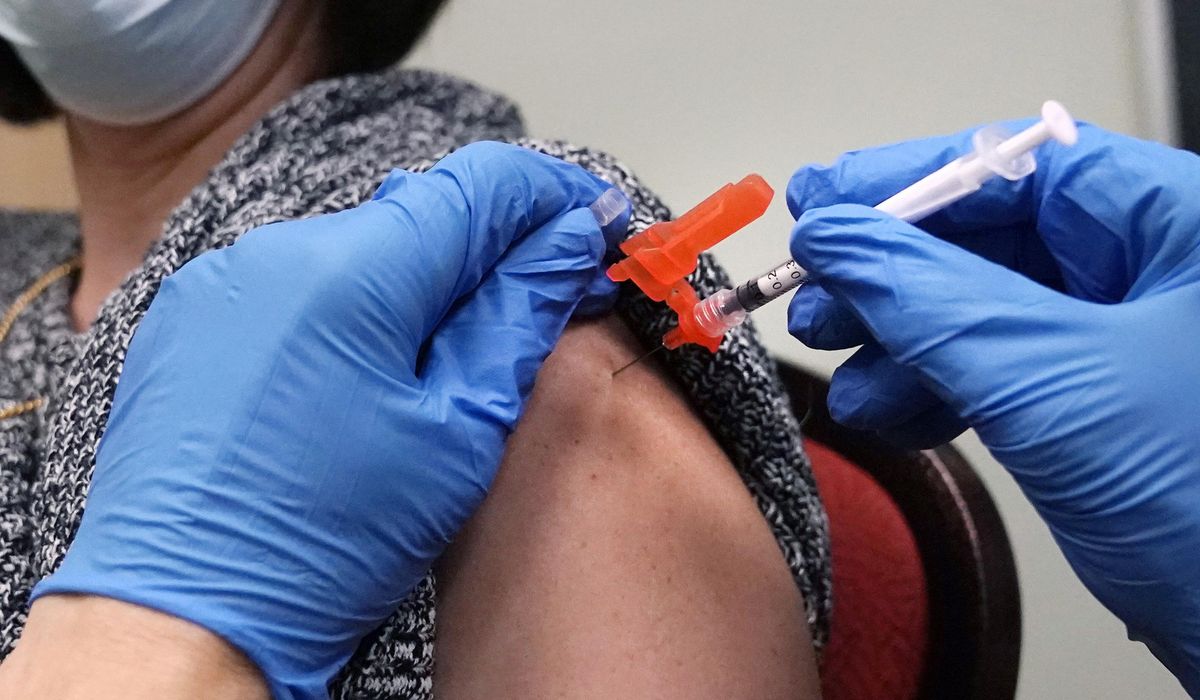
Scientists are warily watching a new, faster version of omicron even as the winter spike of the coronavirus subsides and states and cities rush to relax rules and fully reopen.
The BA.2 variant seems to spread about 30% quicker than the initial omicron variant, overtaking it in South Africa while causing a second winter surge in Denmark.
The subvariant accounts for only 4% of sampled cases in the U.S., according to the U.S. Centers for Disease Control and Prevention, though its proportion doubled over the first two weeks of February. It might continue to gain speed and evade available treatments.
Scientists are hopeful there is enough immunity in American society that if BA.2 does cause trouble, it merely prolongs the tail end of the omicron surge instead of creating a new crisis.
Booster shots seem to offer as much protection against BA.2 as they did against the first form of omicron. Still, the country is trying to avoid any setback as the country records over 100,000 infections and 2,000 deaths per day on the back end of the omicron surge that spread far and wide.
“Another ‘spike’ is unlikely in my view. However, it does mean we can expect more infections over the next few months than would have been the case. They might make a difference in any smaller communities that have somehow evaded large outbreaks so far, and are poorly vaccinated,” said Bill Hanage, associate professor of epidemiology at the Harvard T.H. Chan School of Public Health.
Scientists are trying to learn more about the new variant, including exactly how much more contagious it is than the initial version of omicron — something that can be difficult to measure given varying immunity levels in different parts of the world.
The new variant “appears more fit, as shown by its takeover in many places,” Dr. Hanage said. “However it has mysteriously failed to do so in the U.S. until recently. When looking at the increasing proportions of BA.2 remember that this is an increasing proportion of a smaller number, as case counts are rapidly declining.”
There are some worrying signs, however.
One preprint study suggested BA.2 is resistant to sotrovimab, the monoclonal antibody drug from GlaxoSmithKline and Vir Biotechnology that had been the most effective against the first omicron variant.
“Omicron BA.2 is not neutralized with detectable titer by any of the therapeutic monoclonal antibodies, including sotrovimab,” researchers from the NYU Grossman School of Medicine said in the study, which hasn’t been peer-reviewed.
Vir Biotechnology said its own data based on lab studies contest those findings.
“We note recent conclusions from another lab, which state that no approved or authorized monoclonal antibodies for treatment retain activity against all subvariants of omicron,” Vir CEO George Scangos said.
He said based on lab experiments with a harmless pseudovirus, “we believe that the 500 mg dose of sotrovimab is sufficient to retain activity against the BA.2 variant, just as it has against all other variants of concern and interest.”
Another preprint study from Japan suggested the new variant was more severe in hamsters than the original omicron.
Scientists are trying to understand whether the hamsters serve as a suitable model for humans, however, and a separate review of South African hospitalizations suggested BA.2 wasn’t causing worse disease than the original form of omicron, or BA.1.
“These data suggest that while BA.2 may have a competitive advantage over BA.1 in some settings, the clinical profile of illness remains similar,” they wrote.
Some doctors say the U.S. is prepared to deal with the omicron spinoff as leaders rush to lift mandates and try to pivot to the endemic phase of the disease.
Panagis Galiatsatos, assistant professor at Johns Hopkins School of Medicine in Baltimore, said the initial omicron wave was fueled by holiday gatherings at a time when the vaccine’s immunity was falling and booster uptake remained low.
“I’m not convinced it’ll cause a lethal spike that omicron did in the winter,” he said. “With now boosters in place and no significant gatherings, I don’t expect it to cause a wave of hospitalizations.”
William Schaffner, an infectious diseases specialist at Vanderbilt University, said there is no need to panic or create a new vaccine but BA.2 might “stretch out the endgame” of the pandemic phase, especially as the U.S. relaxes its COVID-19 protocols because of declining case rates.
“I think there’s been a chorus of those in infectious health who’ve said, ‘Don’t go so fast. Take it easy, let this reduction in cases be more sustained.’ But there is obviously a great deal of pressure, particularly in the school situation, to remove the masks and try to return at least that part of our society to something closer to normal,” Dr. Schaffner said. “This may indeed prolong our transition from pandemic into endemic but so far, so good. Everyone has their fingers and maybe their toes crossed, hoping we’ll continue on this path.”
For more information, visit The Washington Times COVID-19 resource page.
Health, The New York Today



